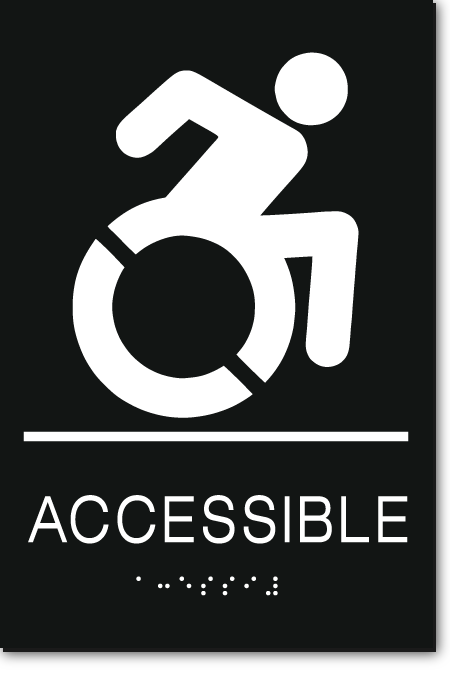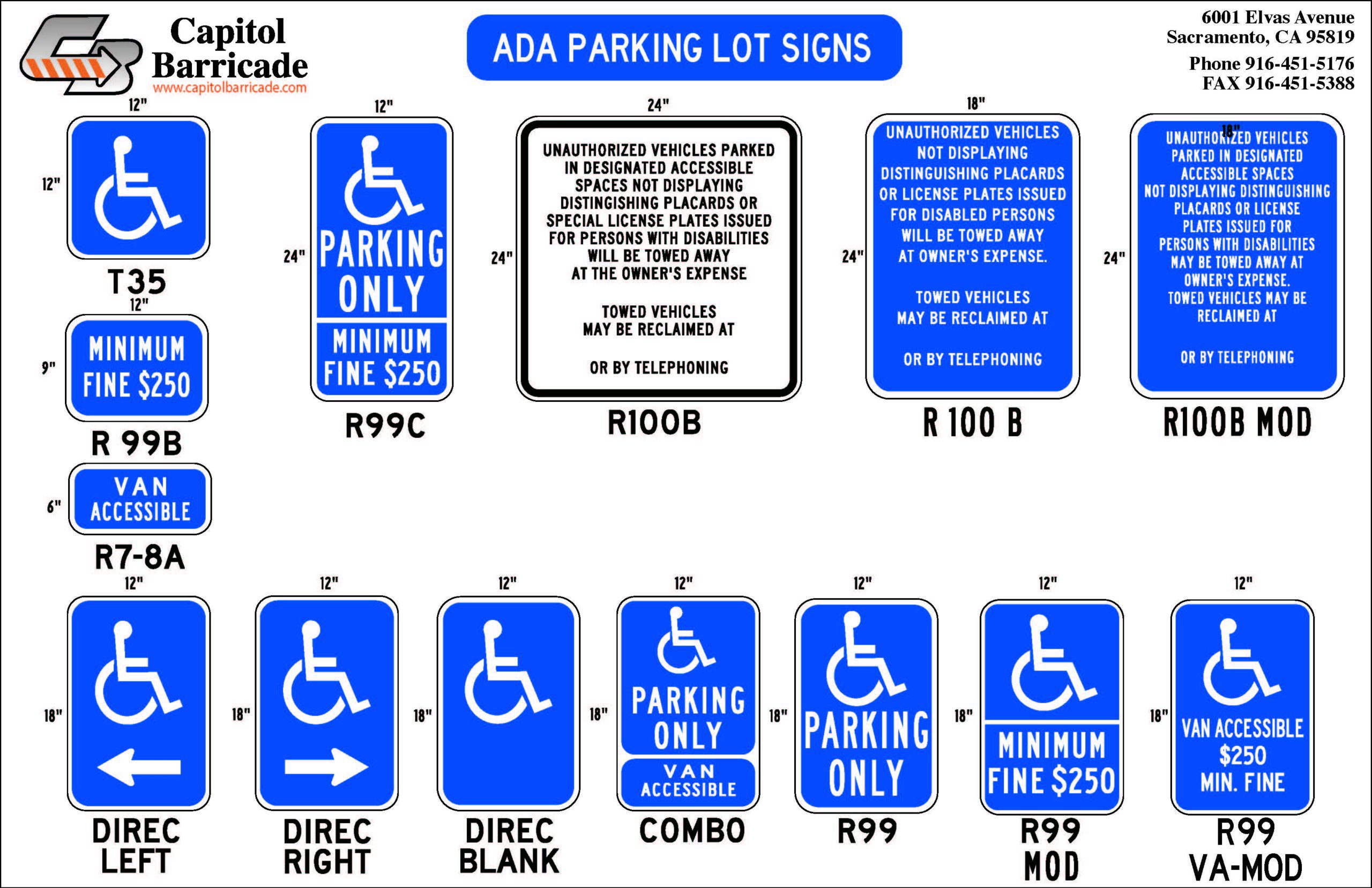Just How ADA Signs Improve Ease Of Access for Everyone
Just How ADA Signs Improve Ease Of Access for Everyone
Blog Article
Exploring the Trick Attributes of ADA Signs for Enhanced Ease Of Access
In the realm of ease of access, ADA signs work as quiet yet powerful allies, guaranteeing that rooms are accessible and comprehensive for individuals with impairments. By integrating Braille and tactile components, these indicators break barriers for the visually damaged, while high-contrast color pattern and understandable font styles satisfy diverse aesthetic needs. Additionally, their tactical placement is not arbitrary however instead a calculated initiative to promote seamless navigation. Beyond these features exists a deeper narrative regarding the advancement of inclusivity and the recurring dedication to producing fair spaces. What more could these indications indicate in our pursuit of global access?
Value of ADA Conformity
Making sure compliance with the Americans with Disabilities Act (ADA) is critical for fostering inclusivity and equivalent accessibility in public rooms and workplaces. The ADA, enacted in 1990, mandates that all public facilities, employers, and transport solutions accommodate people with disabilities, guaranteeing they delight in the very same legal rights and chances as others. Conformity with ADA requirements not just fulfills lawful responsibilities however additionally boosts a company's reputation by demonstrating its commitment to variety and inclusivity.
One of the vital elements of ADA conformity is the application of available signs. ADA indications are developed to make sure that people with disabilities can quickly browse through rooms and structures.
In addition, sticking to ADA guidelines can mitigate the risk of legal consequences and prospective fines. Organizations that stop working to adhere to ADA guidelines may deal with legal actions or penalties, which can be both monetarily difficult and harmful to their public photo. Hence, ADA compliance is important to promoting a fair environment for everyone.
Braille and Tactile Aspects
The incorporation of Braille and tactile components right into ADA signs personifies the principles of availability and inclusivity. It is typically put below the equivalent text on signage to make certain that people can access the information without visual help.
Tactile components prolong past Braille and include increased signs and personalities. These parts are made to be noticeable by touch, permitting people to determine room numbers, restrooms, exits, and various other essential locations. The ADA establishes particular guidelines regarding the dimension, spacing, and placement of these tactile aspects to optimize readability and make certain uniformity across various environments.

High-Contrast Shade Plans
High-contrast color pattern play an essential function in enhancing the presence and readability of ADA signage for people with visual impairments. These plans are important as they make the most of the distinction in light reflectance in between message and history, guaranteeing that signs are conveniently discernible, also from a distance. The Americans with Disabilities Act (ADA) mandates making use of particular shade contrasts to accommodate those with minimal vision, making it an important aspect of compliance.
The efficiency of high-contrast colors exists in their ability to stick out in different lighting problems, including dimly lit environments and areas with glare. Normally, dark text on a light history or light message on a dark history is utilized to attain ideal contrast. Black message on a yellow or white background offers a stark aesthetic distinction that helps in fast acknowledgment and understanding.

Legible Fonts and Text Dimension
When taking into web consideration the design of ADA signage, the option of legible font styles and ideal text size can not be overemphasized. The Americans with Disabilities Act (ADA) mandates that typefaces need to be not italic and sans-serif, oblique, script, very attractive, or of unusual kind.
The dimension of the message additionally plays a pivotal duty in access. According to ADA guidelines, the minimum text height must be 5/8 inch, and it needs to increase proportionally with viewing distance. This is specifically important in public spaces where signage requirements to be checked out quickly and precisely. Uniformity in text dimension contributes to a cohesive visual experience, assisting people in browsing environments effectively.
Moreover, spacing in between lines and letters is indispensable to clarity. Sufficient spacing protects against characters from showing up crowded, enhancing readability. By adhering to these requirements, designers can dramatically boost availability, ensuring that signs offers its intended objective for all people, despite their aesthetic abilities.
Efficient Positioning Strategies
Strategic placement of ADA signage is essential for taking full advantage of access and making certain conformity with legal criteria. Properly positioned indicators lead people with disabilities efficiently, promoting navigating in public areas. Trick considerations consist of proximity, height, and presence. ADA standards state that signs must be placed at a height between 48 to 60 inches from the ground to guarantee they are within the line of sight for both standing and seated individuals. This common height array is crucial for inclusivity, enabling wheelchair users and people of varying elevations to access information effortlessly.
In addition, indicators must be put beside the latch side of doors to permit very easy recognition before access. This placement assists people find rooms and rooms without obstruction. In instances where there is no door, indicators ought to be located on the Visit Your URL closest adjacent wall surface. Uniformity in sign positioning throughout a facility enhances predictability, lowering confusion and improving general user experience.

Verdict
ADA indications play a crucial function in promoting accessibility by incorporating functions that address the requirements of people with handicaps. Incorporating Braille and tactile components ensures important information is available to the aesthetically damaged, while high-contrast color pattern and clear sans-serif font styles improve presence throughout various lighting conditions. Effective placement methods, such as ideal mounting elevations and strategic places, additionally promote navigating. These components jointly cultivate a comprehensive setting, emphasizing the importance of ADA compliance in guaranteeing equal gain access to for all.
In the world of availability, ADA indications serve as silent yet effective allies, making sure that areas are comprehensive and navigable for people with specials needs. The ADA, passed in 1990, mandates that all public centers, companies, and transport services accommodate people with specials needs, ensuring they delight in the same civil liberties and chances as others. ADA Signs. ADA signs are made to make certain that people with specials needs can easily browse with spaces and structures. ADA guidelines specify that indications should be installed at a height in between 48 to 60 inches from the ground to ensure they are within the line of view for both standing and seated individuals.ADA indications play a vital duty in promoting access by integrating attributes that deal with the needs of people with impairments
Report this page